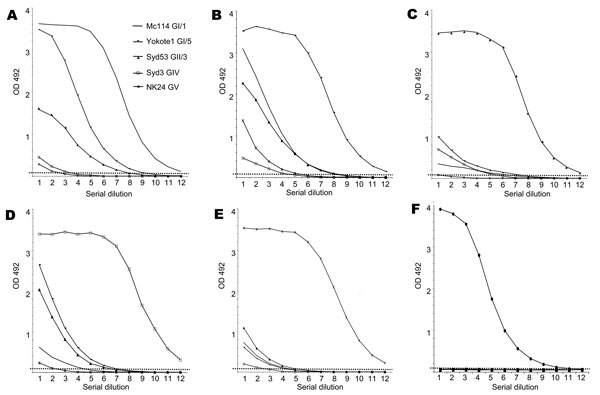Volume 13, Number 10—October 2007
Research
Antigenic Diversity of Human Sapoviruses
Figure 3

Figure 3. Antibody ELISA absorbances at 492 nm of 6 viruslike particles (VLPs) of sapovirus. A) Mc114 GI/1; B) Yokote1 GI/5; C) Syd53 GII/3; D) Syd3 GIV/1; E) NK24 GV/1; F) NoV Osaka659. Wells were coated with ≈100 ng of purified VLPs. Antiserum was used in 2-fold dilutions from 1:500 to 1,024,000 in phosphate-buffered saline, 0.1% Tween 20, 5% skim milk shown as 1–12 along the x-axis. OD, optical density; NoV, Norwalk virus.
Page created: July 02, 2010
Page updated: July 02, 2010
Page reviewed: July 02, 2010
The conclusions, findings, and opinions expressed by authors contributing to this journal do not necessarily reflect the official position of the U.S. Department of Health and Human Services, the Public Health Service, the Centers for Disease Control and Prevention, or the authors' affiliated institutions. Use of trade names is for identification only and does not imply endorsement by any of the groups named above.